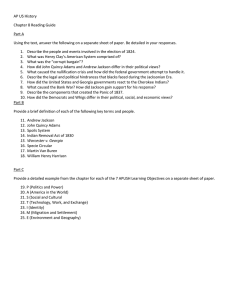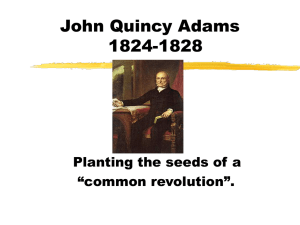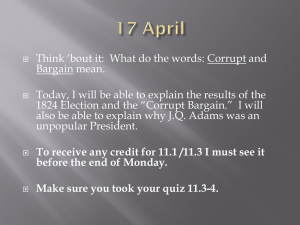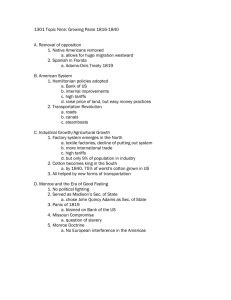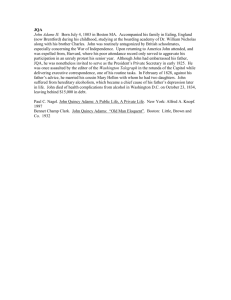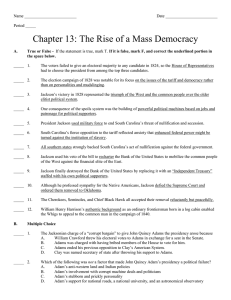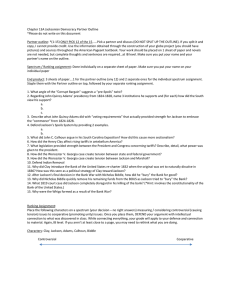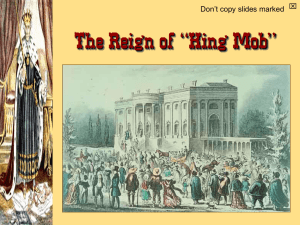John Quincy Adams: 1825-1829
advertisement
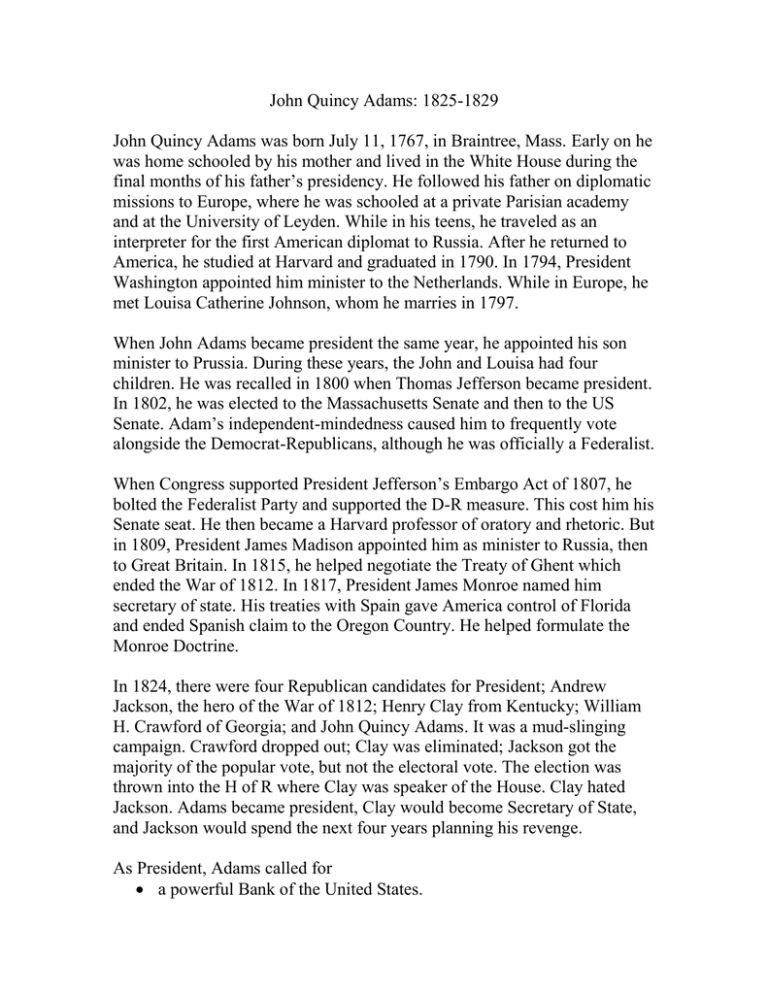
John Quincy Adams: 1825-1829 John Quincy Adams was born July 11, 1767, in Braintree, Mass. Early on he was home schooled by his mother and lived in the White House during the final months of his father’s presidency. He followed his father on diplomatic missions to Europe, where he was schooled at a private Parisian academy and at the University of Leyden. While in his teens, he traveled as an interpreter for the first American diplomat to Russia. After he returned to America, he studied at Harvard and graduated in 1790. In 1794, President Washington appointed him minister to the Netherlands. While in Europe, he met Louisa Catherine Johnson, whom he marries in 1797. When John Adams became president the same year, he appointed his son minister to Prussia. During these years, the John and Louisa had four children. He was recalled in 1800 when Thomas Jefferson became president. In 1802, he was elected to the Massachusetts Senate and then to the US Senate. Adam’s independent-mindedness caused him to frequently vote alongside the Democrat-Republicans, although he was officially a Federalist. When Congress supported President Jefferson’s Embargo Act of 1807, he bolted the Federalist Party and supported the D-R measure. This cost him his Senate seat. He then became a Harvard professor of oratory and rhetoric. But in 1809, President James Madison appointed him as minister to Russia, then to Great Britain. In 1815, he helped negotiate the Treaty of Ghent which ended the War of 1812. In 1817, President James Monroe named him secretary of state. His treaties with Spain gave America control of Florida and ended Spanish claim to the Oregon Country. He helped formulate the Monroe Doctrine. In 1824, there were four Republican candidates for President; Andrew Jackson, the hero of the War of 1812; Henry Clay from Kentucky; William H. Crawford of Georgia; and John Quincy Adams. It was a mud-slinging campaign. Crawford dropped out; Clay was eliminated; Jackson got the majority of the popular vote, but not the electoral vote. The election was thrown into the H of R where Clay was speaker of the House. Clay hated Jackson. Adams became president, Clay would become Secretary of State, and Jackson would spend the next four years planning his revenge. As President, Adams called for a powerful Bank of the United States. a national tariff protecting domestic industry. an expansion of national lands and internal improvements, such as roads, canals, and railroads. an establishment of a national university and a national observatory. Congress didn’t agree to either of these. Adams was not a popular president. In fact, his own vice president, John C. Calhoun, ran as Jackson’s vice presidential candidate in the next election. In that election, he lost 178 to 83. After he was president, he ran for the House of Representatives and served there for 17 years. His early terms in the House coincided with Jackson’s presidency and fought against many of Jackson’s proposals. He tried to get anti-slavery legislation passed, but southern legislators adopted gag rules prohibiting the discussion of the issue. Adams help get them defeated. By the end of Adams term, the nation was turning away from post-Ghent nationalism and toward states’ rights and sectionalism.
